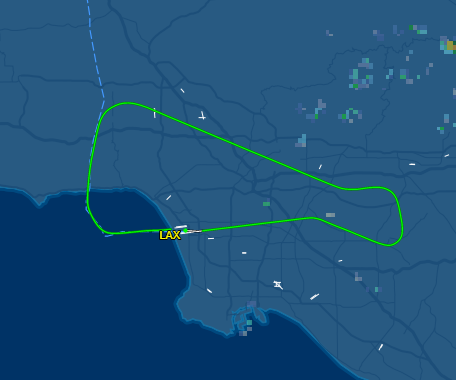A Delta 777 en route from LAX to Shanghai declared an emergency and had to dump thousands of kilograms of fuel to land under the safe landing weight. Planes, particularly heavy transport-class aircraft, do this so they don't destroy their landing gear and the runway itself when landing in an emergency situation.
Now, if you know LAX, you know that generally planes take off over the ocean. In those rare cases when they have emergencies and need to circle back, they dump fuel over the ocean.
Not this guy:
A Delta flight injured more than 50 people after dumping fuel on a Los Angeles schoolyard and school buildings when it declared an emergency shortly after departing for China from the Los Angeles International Airport on Tuesday.
At least 20 children were were treated for minor injuries after being exposed to the jet fuel, according to the Los Angeles County Fire Department. The department said it had a total of 44 patients from four schools: Park Avenue Elementary, Tweedy Elementary, Graham Elementary and San Gabriel Avenue Elementary.
Another 16 people were treated from two schools, Jordan High School and 93rd Elementary, which were also exposed to jet fuel, the Los Angeles City Fire Department said.
Here's the plane's track:

Going by the track log, the plane had a relatively normal climb out for about two minutes to 5,000 feet, then started a turn to the north and leveled off at just below 8,000 feet. The diversion occurred nine minutes into the flight over Simi Valley. I suppose they needed to get him back into the approach path over land because there weren't any good alternatives once he got over land again.
The fuel dumping occurred about halfway between the final turn southwest and landing. At that point the plane was level at 2,400 feet and in no position to do much else but land. But Jet-A (aka kerosene) doesn't evaporate completely from that altitude. So kids got covered in it. Yuck.
The L.A. Times has more:
Ross Aimer, chief executive officer of Aero Consulting Experts, said fuel dumping is very rare and is used only in case of emergencies or if pilots have to lessen the load of the plane to land.
“Most pilots choose not to dump fuel unless the emergency really dictates it,” Aimer said.
Among the emergencies would be landing gear that is not functioning and would make it hard to control the plane.
Aimer said that without knowing what Flight 89’s emergency was, the pilot may have been in the final stage of dumping fuel as it was heading toward LAX, resulting in today’s controversial fuel dumping incident.
The L.A. Times also believes the world is flat, as both articles about the incident by staff writer Matt Stiles insist that the plane diverted over Santa Monica Bay, rather than over Hidden Hills, as the track shows. The great-circle departure vector from LAX to PVG is 312°, or northwest. And the flight plan as filed called for the plane to fly 336° (nearly north) and intercept today's westbound route over the Pacific, which it would probably have picked up some distance due north over California or Oregon.
I can't wait to read the NTSB incident report. And I do wish reporters knew aviation better.